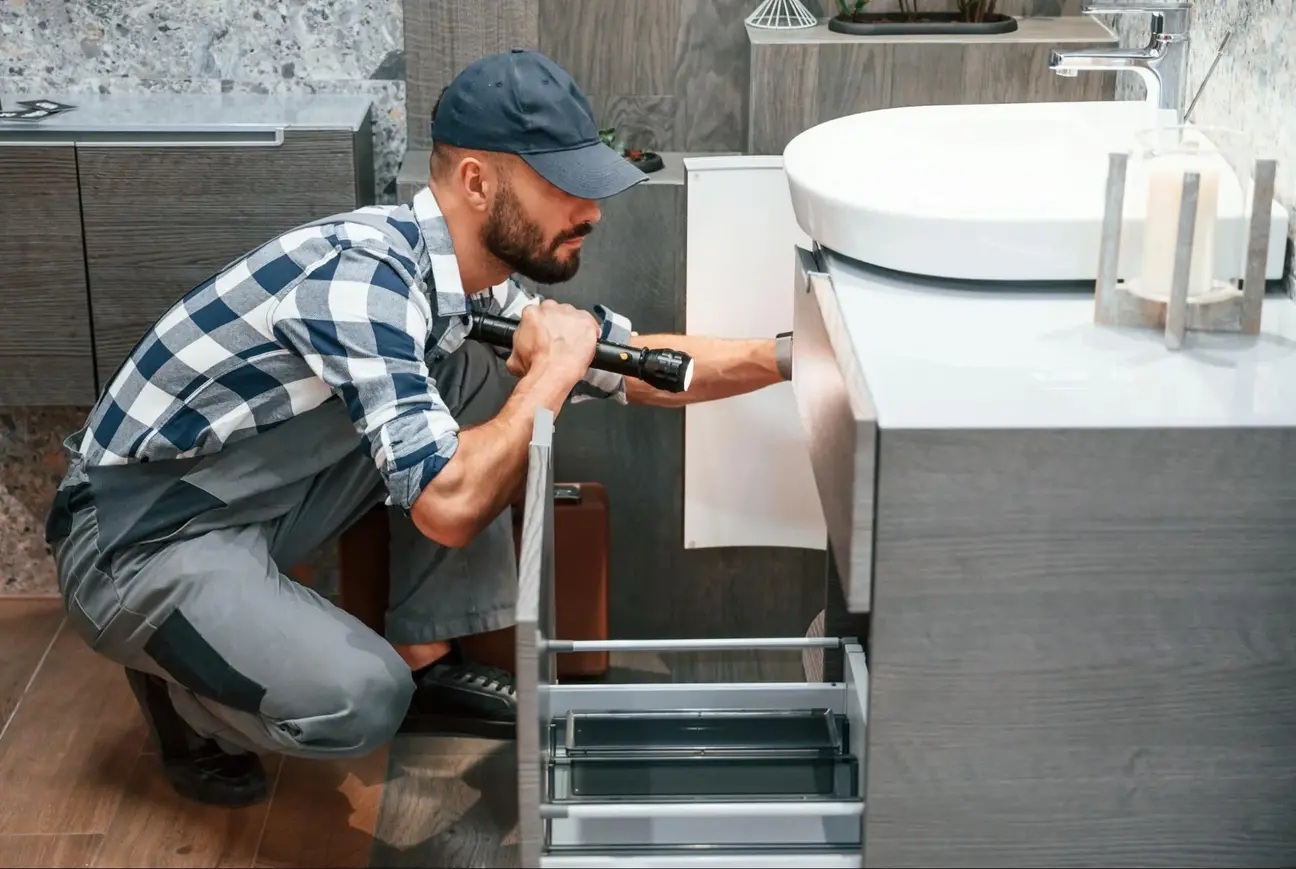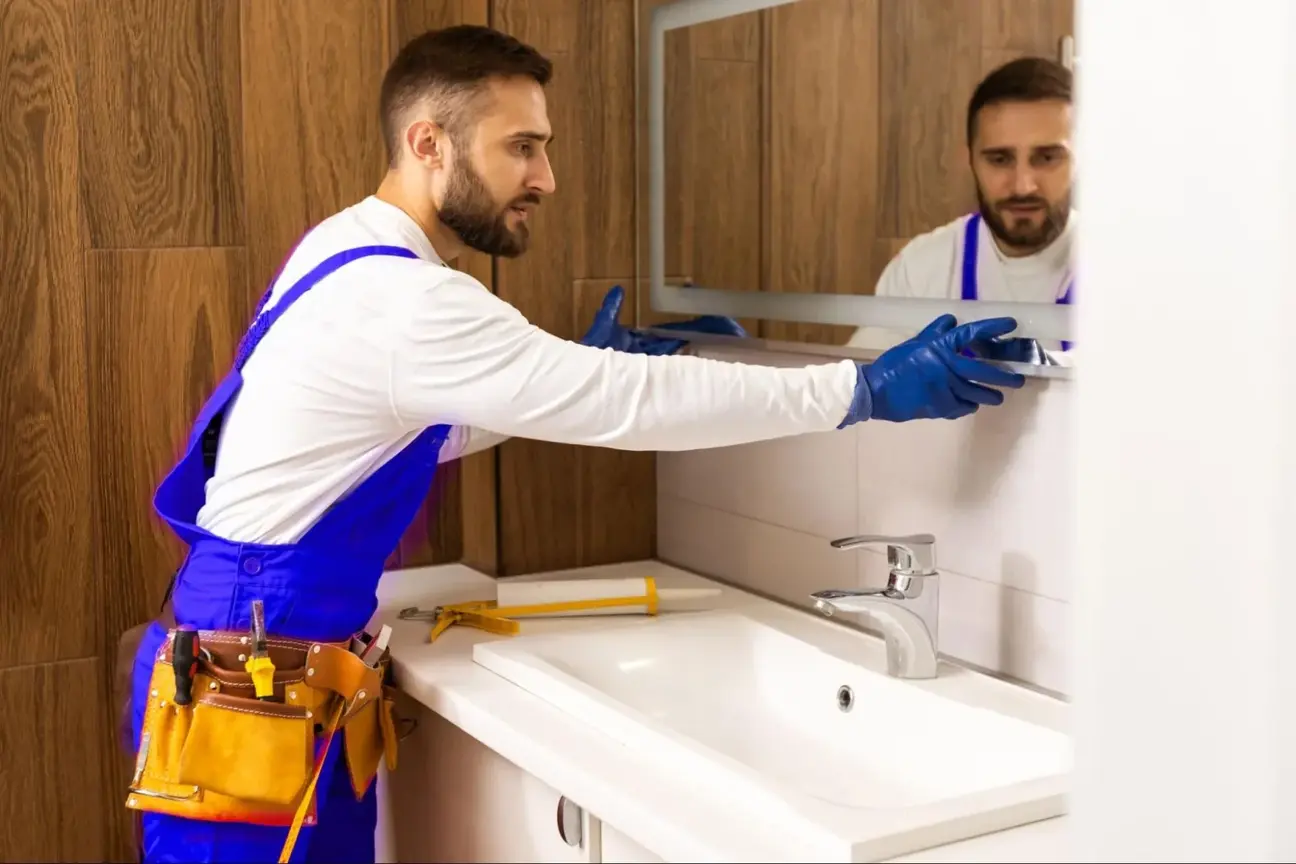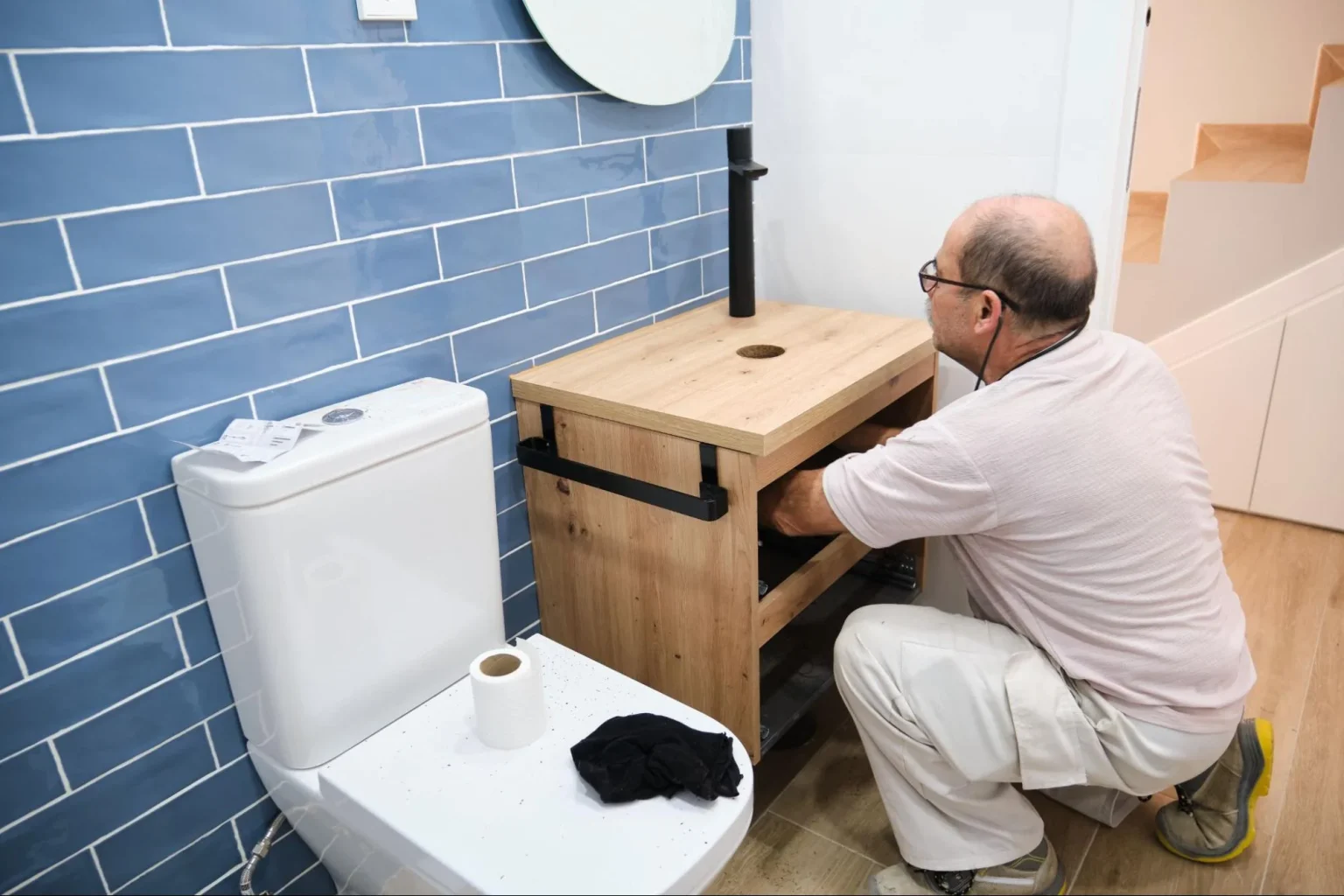
If you’re looking to update your bathroom, replacing an old vanity with a new one is a great place to start. Installing a new bathroom vanity may seem like a daunting task, but with the right tools and a little bit of know-how, it can be a straightforward DIY project. In this article, we’ll cover the basics of installing a new bathroom vanity, from preparing for installation to completing the project.
Before you start installing your new bathroom vanity, it’s important to prepare the space. This includes removing the old vanity, measuring the area to ensure the new vanity will fit, and making any necessary plumbing adjustments. Once you’ve prepared the space, you can begin installing the new vanity. This involves attaching the vanity to the wall, connecting the plumbing, and securing the sink and countertop.
By following the steps outlined in this article, you’ll be able to install a new bathroom vanity with confidence. Whether you’re updating your bathroom for your own enjoyment or to increase the value of your home, a new vanity can make a big difference. So let’s get started!

Before you begin installing bathroom vanity, there are a few things you need to do to prepare. This section will cover the three main steps you need to take before you start installing your new vanity: assessing your space and vanity selection, gathering tools and materials, and removing the old vanity.
The first thing you need to do is assess your bathroom space and choose the right vanity for your needs. Measure the area where you plan to install the vanity, including the height, width, and depth. Make sure to take into account any plumbing or electrical fixtures that may be in the way.
When choosing a vanity, consider the size and style of your bathroom. You want to choose a vanity that fits well in the space and complements the overall design of the room. Make sure to also consider the storage space and functionality of the vanity.
Once you have chosen your new vanity, you will need to gather the necessary tools and materials for the installation. You will need a stud finder, level, saw, utility knife, screws, drill, shims, caulk, silicone caulk, manufacturer’s instructions, safety glasses, gloves, and anchors.
Make sure to read the manufacturer’s instructions carefully before beginning the installation. This will ensure that you have all the necessary tools and materials and that you understand the installation process.
Before you can install your new vanity, you will need to remove the old one. Turn off the water supply and disconnect the plumbing. Remove any drawers or doors from the vanity and detach it from the wall. If the vanity is screwed into the wall studs, use a drill to remove the screws.
Once you have removed the old vanity, inspect the flooring and wall studs for any damage. Make any necessary repairs before beginning the installation of your new vanity.
By following these steps and taking the time to prepare for the installation properly, you can ensure a successful and hassle-free installation process for your new bath vanity.

Once you have removed the old vanity, it’s time to install the new one. This section will guide you through the process of installing a new bathroom vanity.
First, you need to place the new vanity base in the desired location. Make sure that it is level. Use shims if necessary. Once you have the vanity base in place, secure it to the wall using screws. Use drywall screws if you are attaching the vanity to drywall. If you are attaching the vanity to a stud, use wood screws.
Next, attach the vanity top to the vanity base. Apply silicone caulk to the top of the vanity base and carefully place the vanity top on it. Make sure it is level. Once the vanity top is in place, attach the sink to the vanity top using the manufacturer’s instructions.
Now it’s time to finalize the plumbing. Connect the supply lines to the faucet and the water supply. Install the P-trap and connect the drain assembly to the sink. Check for leaks. If everything is okay, apply caulk around the edges of the sink and the backsplash.
Adjust the adjustable legs of the vanity to ensure it is level. Attach the hardware to the doors and drawers.
Finally, turn on the water supply and check for leaks. If everything is working correctly, you can now install the mirror and any other accessories.
Congratulations! You have successfully installed a new bathroom vanity. If you encounter any problems during the installation process, it may be best to consult a plumber. Remember to recycle any materials you can and enjoy your newly renovated bathroom.
Installing a new bathroom vanity can be a great way to update the look and functionality of your bathroom. It is a relatively simple process that can be completed in a few hours with the right tools and materials.
First, you need to choose the right vanity for your bathroom. Consider the size of your bathroom and the style of your existing fixtures. You can either purchase a pre-made vanity or build one yourself. If you are building a vanity yourself, you will need to measure the space where the vanity will be installed and cut the wood to fit.
Once you have your vanity, you need to prepare the space for installation. This involves removing the old vanity, disconnecting the plumbing, and ensuring the space is level. You may need to make some adjustments to the plumbing to ensure that everything fits properly.
Next, you will need to install the new vanity. This involves attaching the vanity to the wall and connecting the plumbing. Finally, you can add the finishing touches to your new vanity. This includes installing the sink, faucet, and any other accessories you may want. You may also want to add some storage solutions, such as shelves or drawers.
Overall, installing a new bathroom vanity is a relatively simple process that can be completed in a few hours with the right tools and materials. If you are unsure about any aspect of the installation process, In that case, it is always best to consult a professional.
Kaminskiy Care and Repair offers expert handyman services to take care of your bathroom vanity installation and ensure that everything is done correctly and safely. Contact us today
To install a new bathroom vanity, you will need a few basic tools such as a drill, level, measuring tape, screwdriver, and a wrench. Additionally, you will need materials such as screws, shims, silicone caulk, and plumber’s putty. Make sure to read the manufacturer’s instructions carefully to ensure that you have all the necessary tools and materials before beginning the installation process.
The steps involved in replacing an old bathroom vanity with a new one include removing the old vanity, preparing the space for the new vanity, installing the new vanity, and connecting the plumbing. It is important to turn off the water supply and disconnect the plumbing before removing the old vanity. Once the old vanity is removed, you will need to prepare the space by leveling the floor and ensuring that the new vanity fits properly. After the new vanity is installed, you can reconnect the plumbing and turn on the water supply.
Before attempting a DIY bathroom vanity installation, you should consider your level of experience, the complexity of the installation, and the tools and materials required. It is important to read the manufacturer’s instructions carefully and to follow all safety precautions. If you are unsure about any aspect of the installation, it may be best to consult a professional.